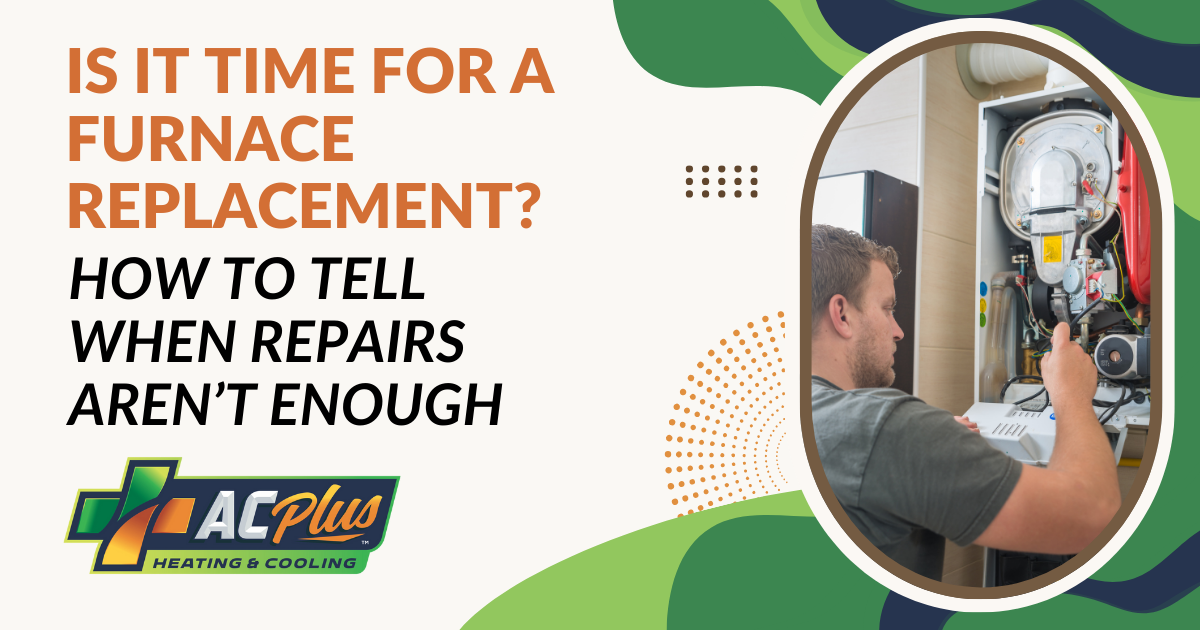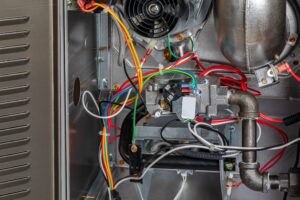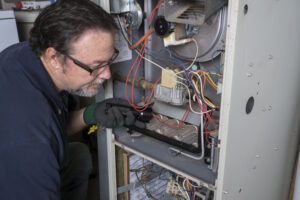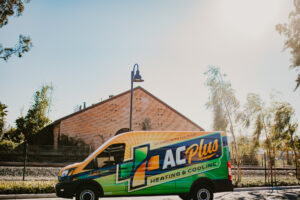Is It Time for a Furnace Replacement?
Schedule service with one of our expert heating & cooling technicians.

Although winter in Victorville, CA, is generally mild, it’s important to have a reliable furnace to keep you warm. Even if you’re diligent with regular maintenance, your furnace won’t last forever, and eventually, you’ll need a furnace replacement. No matter how much you’re willing to pay for more repairs, it might not be enough to restore your furnace to its original state. The experts at AC Plus Heating and Cooling have some tips and information about the signs that may indicate it’s time to replace your furnace for more consistent, reliable heating.
How Long Does a Furnace Typically Last?
So, how long does a furnace last? The answer depends on a few factors, including what type of furnace you have (gas or electric), past maintenance, and how much hot water your household uses.
Average Lifespan
The average lifespan of a gas furnace is between 15 to 20 years. Electric furnaces tend to last longer, often between 20 and 30 years, with proper care. The total lifespan of a furnace also depends on things like the quality of installation and the components used, but other factors could impact your furnace’s overall longevity, too.
Factors that Impact Longevity
Here are some key factors that impact furnace longevity.
- Maintenance: If you schedule regular seasonal maintenance like annual check-ups and routine filter changes, your furnace should last longer.
- Usage: Furnaces that run more frequently for long periods in cold climates tend to have a shorter lifespan than furnaces that only run occasionally.
- Quality: The quality of your furnace’s components, the brand, make, and model, and the quality of the installation itself may also impact longevity.
Common Signs It’s Time to Replace Your Furnace
You may not know exactly when to replace a furnace. Look for these common signs that you need a new furnace before it breaks down and leaves you in the cold.
Your Furnace Makes Odd Noises
Strange noises coming from your furnace almost always indicate a mechanical issue, although dirt may be the cause if your furnace is just a few years old. Screeching, popping, banging, or squealing sounds may indicate the system is overheating. Thumping or grinding sounds may mean the blower motor is failing, while clicking sounds could mean you have a failing compressor that might cost more to repair than a new furnace installation.
Repair Costs are too High
The cost to replace your furnace may be less than or equal to the cost to repair your old furnace. Some repairs may cost hundreds or even thousands of dollars. Older furnaces tend to require more frequent repairs that add up over time. Some experts say it’s best to replace your furnace if the repair costs are 30% to 50% or more of the price of a new unit.
Inadequate or Uneven Heating
If your furnace isn’t producing heat, no matter how high you set the thermostat, it could mean the unit is failing. A lack of heat or uneven heating in different rooms is a common problem that tends to occur with a malfunctioning or older furnace nearing the end of its lifespan.
Poor Indoor Air Quality
Poor indoor air quality (IAQ) can make allergies, asthma, and other respiratory symptoms worse. Certain pollutants generated by oil and gas furnaces can also be harmful to your health. Routine maintenance, including tune-ups and filter changes, is vital to keep the air inside your home safe and clean. A reduction in indoor air quality during the winter may be a sign that your furnace needs maintenance, repairs, or replacement.
Increasing Energy Costs
Your monthly utility bill fluctuates depending on the season, but it shouldn’t change too dramatically without a significant change in usage. If your energy bill is suddenly much higher than normal, it may indicate a loss in furnace energy efficiency. This is one of the most common old furnace problems and is a key sign that you may need a replacement.
Furnace Repair vs. Furnace Replacement: How to Decide
It may be difficult to determine which option is best when deciding between repairing vs replacing your furnace. Remember these factors to help you determine whether a repair or a replacement is the right choice for you.
Repairs
If your furnace is newer and only a few years old, it’s likely cheaper and easier to just have it repaired. Minor issues like replacing the capacitor or addressing thermostat problems are simple and inexpensive to fix. Overall, as long as the cost to repair your furnace is less than half the price of a new unit, you’re better off repairing it.
Replacement
Furnaces that are close to 15 years old or older and that have frequent breakdowns should be replaced. A reduction in efficiency, performance, and indoor air quality is also a red flag that indicates you need an upgrade. Frequent noises, strange odors, and major problems that cost a lot of money to fix may not be worth it, and you should consider getting a replacement instead.
Benefits of Replacing an Old Furnace
A new furnace costs anywhere from a few thousand dollars to $10,000, on average, depending on the type, size, difficulty of installation, and other factors. Here are some of the benefits of furnace replacement.
- Upgrading to a newer, more energy-efficient furnace helps you save on monthly utility costs and provides more consistent, reliable heating.
- Modern furnaces have new features like special filters and closed combustion chambers to support healthy indoor air quality.
- A new furnace is more reliable, so you won’t have to worry about paying for frequent repairs or dealing with unexpected breakdowns.
- Installing a new furnace may help to increase your home’s resale value.
What to Expect During a Professional Furnace Installation
Here’s what to expect when you contact AC Plus for professional furnace installation services.
- Step one: We’ll assess your home size and unique heating needs to find the best furnace for you.
- Step two: Our licensed technician will disconnect, remove, and safely dispose of your old furnace.
- Step three: We place the new furnace in the proper location and connect the electrical and/or gas lines and ductwork if required.
- Step four: A technician will test the furnace, calibrate the thermostat, perform safety checks, and confirm that everything is performing optimally.
Don’t Wait Until It Breaks: Call AC Plus Today!
Don’t wait until your furnace breaks to get a replacement. AC Plus Heating and Cooling is the trusted local expert available to help with your home heating needs in the High Desert and Inland Empire area of Southern California. To schedule your new furnace installation or replacement, contact us today!
Written By Matt Postoian
Matt Postoian has been in the HVAC industry for over 20 years and is dedicated to providing homeowners in Southern California with total home comfort.
Service Request
"*" indicates required fields


